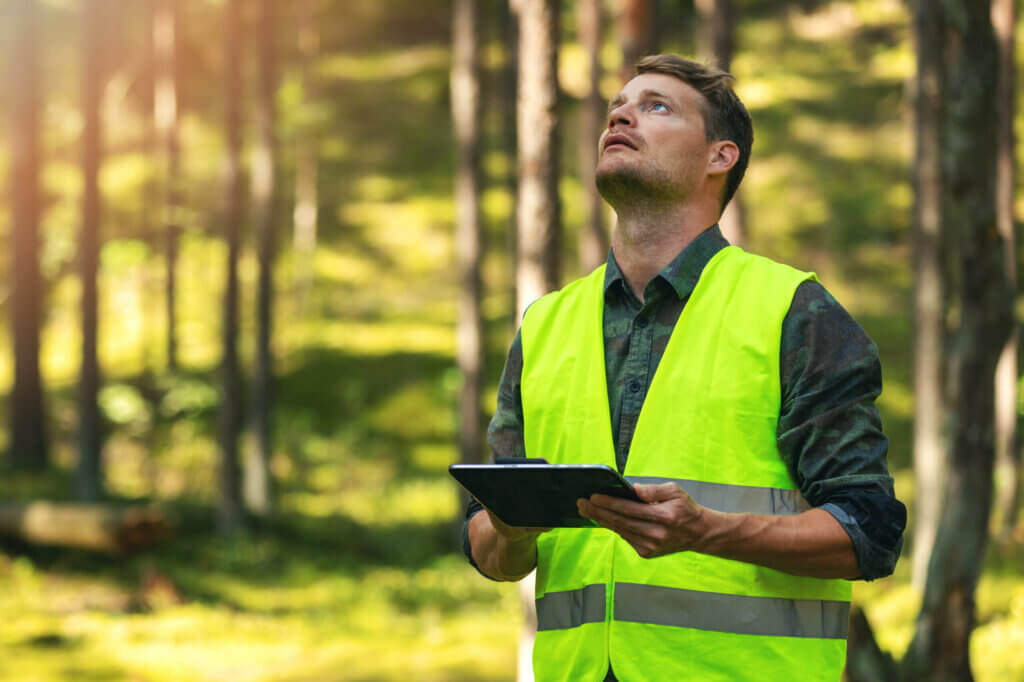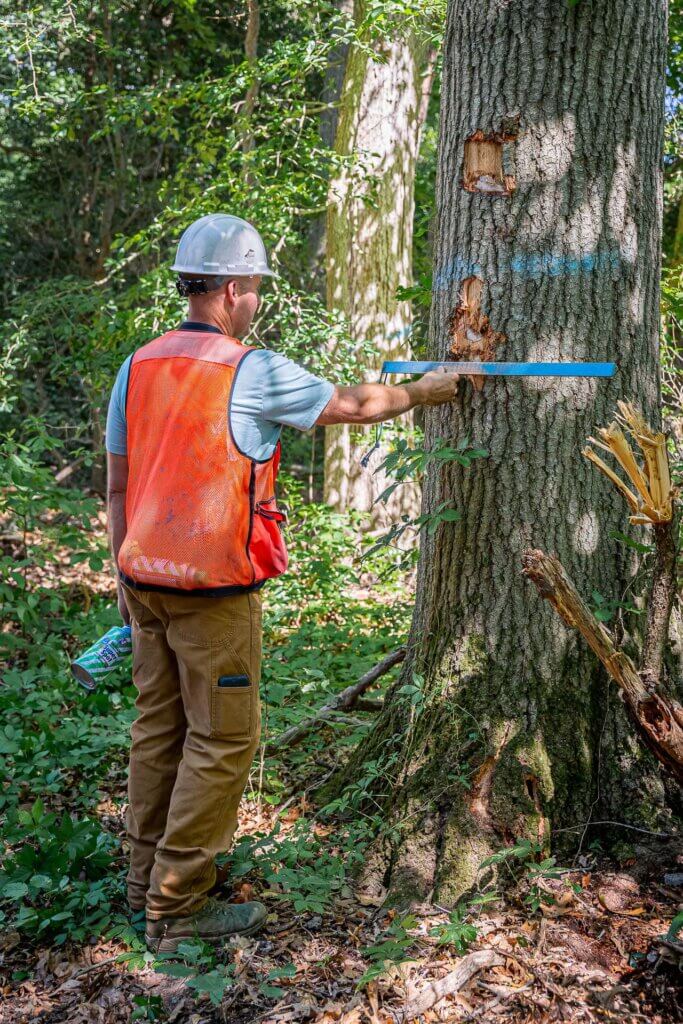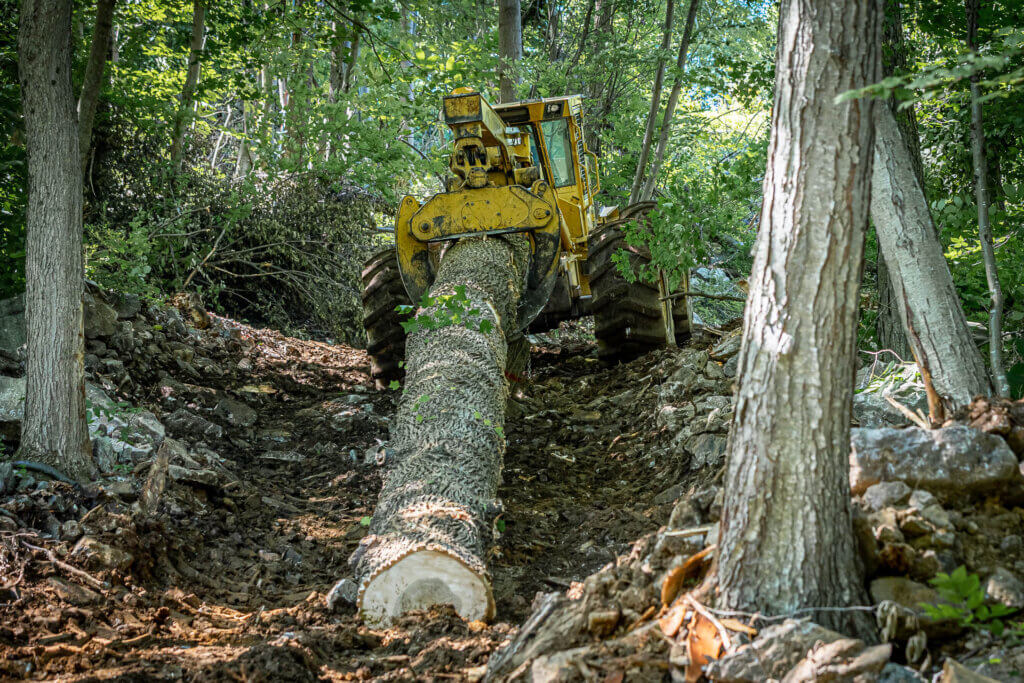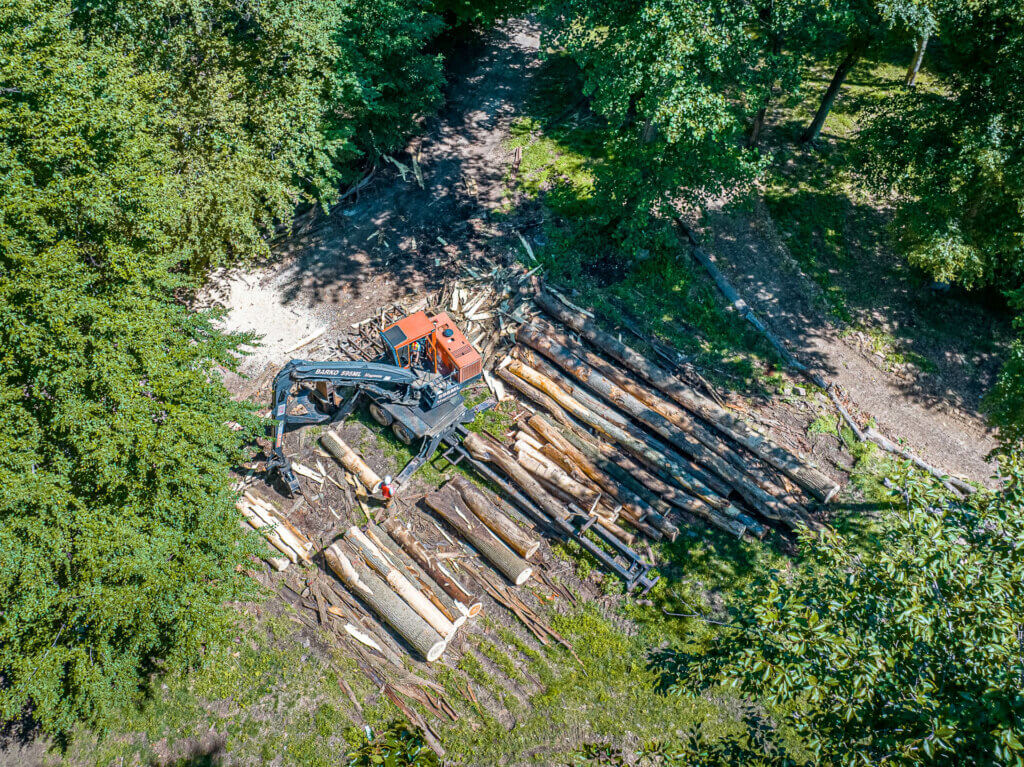You might have a general idea of what’s involved in harvesting trees, but we wanted to guide you through a typical Stoltzfus timber harvest. Though each project will have some differences, this article will show you what you can expect if you contract with us for your property.
Initial contact and meeting
When you call about a timber harvest, the first thing we need to know is how many trees you have. We’ll start by asking how many acres of woods you have, because this gives us a general idea of how many market-ready trees trees you have. Our minimum tree count is 50, so if you have 3 acres or less, it’s likely that we will not be able to take on your project.
We have this minimum because timber is harvested with large, specialized equipment that can make short work of an acre or two. This large equipment requires special permits to move, so moving from place to place isn’t simple. For the sake of efficiency, we need to stay in one place for at least a few days.
During this first phone call, we have a few other things we like to ascertain. We’ll ask if you know what kind of trees you have and if you can give us a sense of how big (diameter) they are. We’ll also ask you about your objectives. Are you simply looking for the cash value? Are you looking to manage your property for game animals? Maybe you are planning to turn forest into cropland and need a clear cut. The answers to these questions help us to understand the situation before we schedule a visit.

Site visit
Once we think there will be enough trees, one of our foresters will schedule a site visit. He will have several objectives during his visit.
- Checking property boundaries and characteristics.
- Where are the boundaries? Are they clearly marked?
- What will it take to get our equipment in?
- How easy will it be to cut paths for skidding the logs to a loading area?
- Will we have to cross any streams?
- Assessing the quality of the timber. A tree isn’t always a tree. In other words, there are certain requirements for a tree to have market value. The species, size (trunk diameter), and condition of the trees are very important.
- Measuring the quantity of the timber. As we’re walking the property, we’ll be measuring the trees to calculate the board feet of lumber that they will produce. As we identify trees that are to be harvested, we will mark them with paint so that the logging crews will know which ones to harvest.
- Giving you an offer. Once we’ve completed our visit and made our calculations, we will give you an offer.

Contract
Once you’ve reviewed our offer and have decided to proceed, the next step is to sign our timber harvest contract. At the point of signing, we will pay you 20% of the price we quoted you. You will receive the remaining 80% when we are getting ready to cut. Remember, even though we make two payments, you will have all of the money we promised you before we cut a single tree.
Log crews
Once you sign the contract, we will start determining when we can schedule you. This process can take anywhere from a week to many months. To give you the best price, we need to stay efficient, and this means moving our equipment in a logical and ordered way. If we happen to be working near your property when you sign the contract, then we could be out in a short time. If we aren’t in your area and don’t have other projects in your area, we may delay the harvest until it makes sense.
Other factors that can delay a harvest include:
- Permits. Some jurisdictions require us to file harvest permits, and some of these jurisdictions are slow on the approval process.
- Seasonal delays. Certain times of year are harder to work in than others, and hunting season is especially challenging (since there are many projects that we can’t do when hunters are active).
- Transit permits. Moving our equipment requires us to file special “wide load” permits, and some of our equipment requires us to coordinate with vehicle escort services.
Before harvest begins, the forester who did the site visit will meet with one of our logging crews. He’ll explain the scope of the work and note special cautions that are required. (Such as protecting the trees we are leaving, being careful of any environmentally sensitive areas, or any other special property needs.)
 Logging operation
Logging operation
Cutting the trees down and getting them out safely and efficiently is the job of our logging crews. We have two crews of our own, and we typically keep three contracted crews going as well. We trust all of them and often rely on their hands-on knowledge of logging operations to plan a safe and reasonable harvest.
The crews will arrive with their equipment and begin laying out any skid roads that need to be created. These are paths that they create to drag the logs to the landing area. The landing area is a location that our hauling trucks can get to and that is large enough for our loading operations.
Our crews will then get to work felling the trees that we marked with paint. As they do so, they will be very careful to avoid serious damage to any trees that are to be left. Because trees are close to each other, sometimes a few branches will be broken off one tree as another one is falling. This is the nature of timber harvesting, and some of this can’t be helped. However, we take every possible step to avoid serious injury to the other trees, and if any tree is irreparably damaged, we will pay you twice its market value.

Cleanup
Cutting and removing large trees will leave some marks on your property. Though this is the nature of a logging operation, we do all we can to minimize the disturbance. We also take steps at the end of the project to restore your site. Here are a few things you can expect.
- You’ll see some ruts. Some of these ruts come from our equipment tires, and some come from dragging logs out of your woods. We state in our contract that we will fill in any ruts 9″ or deeper. We will use ryegrass and clover to seed any bare areas that we have made.
- You’ll notice hanging, broken branches. These branches will be broken as we cut down other trees, but we’ll keep these to a minimum. Since we are loggers and not arborists, we don’t have the capacity to climb into the trees to remove hanging branches.
- You might notice some scuffed bark. Sometimes as we are dragging logs or felling trees, some bark will be knocked off a standing tree. In nearly all cases, these trees will be fine and will compartmentalize (“heal over”).
- You will see piles of branches from the trees we remove. As timber harvesters, we take the logs, not the branches. We will cut tree tops so that branches stand no higher than 6′ off the ground, but you will still see them in the woods. The tops will protect young seedlings from deer browse and will decompose over a period of several years.
- Your woods will look thinner. We know that you expect this, but we also know how hard it is to envision the difference you will see.
What we have just described is typical of any timber harvest, but we find that people are still surprised at how different things look. We want to assure you, however, that we are ethical and intentional with our harvests, and that we will leave your woods in a healthy state, ready to grow the next crop of trees.
